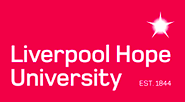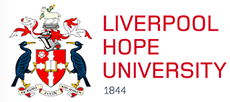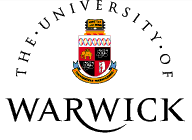In what is now a classic paper, Paul DiMaggio and Walter Powell (1983) explained that companies/firms in any given field (loosely speaking, an industry) often resemble each other after a time. They described how the process of becoming similar – of organisational isomorphism – was not necessarily oriented around efficiency or effectiveness (i.e. doing something better) but was often driven by one or more of the following three imperatives:
- Coercion: alignment with formal rules (e.g. legislation), or adopting a veneer of formality (e.g. introducing job titles and hierarchies) in order to appear legitimate;
- Mimesis: organisations, when faced with a novel or uncertain situation, copy their peers (particularly the leading organisations) in the hope that this represents a viable solution. It can also be driven by a wish to appropriate additional legitimacy;
- Normativity: particular cultures develop around professions, and standardised ways of doing things – such as training routes or operating practices – develop steadily and these can become taken for granted.
They provided a wealth of studies on which they based this assertion, and a great many scholars have used this theorisation to analyse organisational and field developments in areas from the chemical industry (Hoffman 1999) to large retailers’ supply chains (Lai, Wong, & Cheng, 2006). Interestingly, though, there seems to be a tendency in US analyses of isomorphism to over-attribute change to mimesis, while European scholars are more likely to identify coercion as the driving force (Mizruchi & Fein, 1999). Mizruchi and Fein attribute this to cultural differences inherent in social science scholarship in the US/Europe, and ironically, this in itself is an example of normativity in action.
Mugs
I collect university mugs; bear with me on this, it is relevant. Whenever I give a talk at a university, either as a guest speaker, at a conference, or as part of a job application (!!), I make a point of purchasing one of their mugs from the university shop. Everyone has their foibles, and this is (one of) mine. It is relatively innocuous and inexpensive, and for a student of higher education culture and history like myself, quite fun. In the course of my collecting, I have noticed, particularly among British universities, a proliferation of university crests on their mugs and other merchandise. I was sensitised to this topic because my own university had recently rebranded itself, and in the process had created and registered a new coat of arms. See the ‘old’ and ‘new’ brands here.


Why a new logo, and why this one?
Why did they do this? Changing a logo and brand involves a process of organisational decision-making, and no doubt incurs considerable cost and effort as all of the university websites, letterheads, promotional materials (and, yes, mugs) have to be redesigned and replaced. Also, why might this new emblem have been chosen as the new projection of the university’s identity? Without consulting the university leadership or reading the minutes of the meetings where this was negotiated and decided, I cannot be sure. It appears, though, to represent a classic case of mimesis. There is no legal ordinance which compels universities to have a coat of arms, so it is not coercion, and neither is the ‘choice’ of one an inherited, unthinkingly adopted practice. Well, maybe not yet…
Looking at the logo itself, the name and date (1844) are still there, but now there is a coat of arms. The date in itself is important: Liverpool Hope University is new in university terms – it was granted university status in 2005, but it was formed by merging three teaching colleges, one of which dates back to 1844. By using this date, the university is seeking to bolster its credentials by highlighting its long history and well-established expertise in educating students.
In addition to this, there is a motto in ancient Greek. This, I suspect, is a further projection of erudition and scholarship; probably only a handful of our staff (theologians or Greeks) can read this. Finally, the coat of arms is itself is a further mimicry of Oxbridge and their ilk, whose universities and associated colleges have their own shields and coats of arms, and this applies equally to those colleges with medieval roots as to those established more recently. In other words, Hope is copying elite, ancient universities in a move to enhance its legitimacy.
Looking further ‘afield’
The rebranding of one university obviously only tells an individual story. Out of curiosity, I trawled back through UK university websites on the ‘Wayback Machine’, an online source which takes snapshots of websites over time. This took me down a bit of a rabbit hole, but it led to an interesting discovery – see below. There does seem to be an observable trend here, and it is not only the newest universities who are playing this game. Some have long had such a logo, while others have foregrounded or adapted their existing coats of arms. One has seemingly abandoned theirs, and still others are not (yet?) following the crowd. I then dug further, submitting a request to the College of Arms, the UK organisation responsible for the registration of official crests and so on. According to their records, 27 universities and colleges have either registered new coats of arms or updated existing ones since 2006. It appears that Liverpool Hope is not alone in this strategy, and is arguably a bit of a latecomer to it.
This vogue in branding obviously doesn’t, in itself, improve organisational performance in a day-to-day sense. However the higher education literature for some time has described, in the UK and elsewhere, a period of heightened competition as universities vie for the relatively scarce – and interrelated – resources of prestige, students, and research funding. As per DiMaggio and Powell’s assertion, this represents the period of uncertainty in which mimesis is likely to take place. It seems that many universities feel that having a coat of arms – a shield – may offer both metaphorical and actual protection in these unpredictable times.
Civic (c.1900)






‘Plate Glass’ (1950s-60s)










‘New’ (1992 or later)









The University of Birmingham didn’t do a rebrand in 2016 – it used both of those logos during the time I was doing my undergraduate degree – I still have a University hoodie from about 2012 with the second logo on it!
University of Southampton (where I’m doing my PhD now) did a rebrand too though a crest isn’t part of it. The old logo with a dolphin on it still graces soap dispensers in some of the toilets….
Hi Ryan. Thanks for sharing., that’s really interesting. Yes, Birmingham isn’t listed by the College of Arms as making a change, but their crest does appear to feature more prominently on their website now. One respondent on Twitter said that his (post-92) university had recently been advised by consultants to adopt a crest!
Newcastle used the lion and cross shield back in the eighties when I attended it. Also while it starred in the “Redbrick” tv series and has a number of civic style buildings it was division of Durham University until 1963. So it more properly a plate glass university
Thanks, that’s an interesting update/correction. Almost any category of university in the UK is probably porous as the divides between them are never clean – there are endless exceptions to the rule.
I think we need a pic of the mug collection 🙂